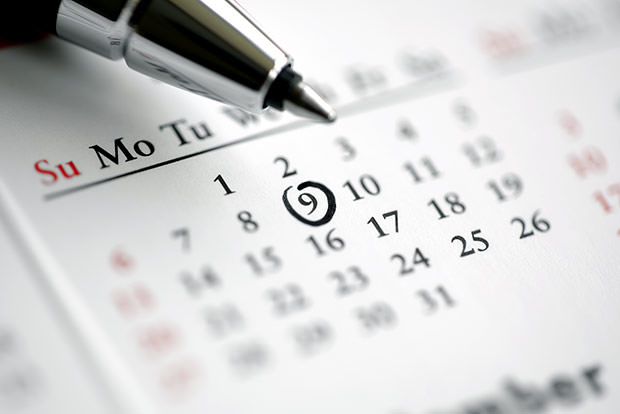
Setting goals allows you to identify where you want to be and helps you create a plan for getting there. Goals are a source of motivation, but when they are not well designed, they can set you up to fail. Follow these tips to set effective goals that result in S-U-C-C-E-S-S.
Smart
SMART goals are specific, measurable, achievable, relevant, and timely. Each goal you set should follow the SMART model. State exactly what you want to do, when you will accomplish it, and how you will measure it. Ensure that your short-term goals keep you on the right path, and set realistic goals you can accomplish.
Ultimate
First, pick your endpoint. What is your long-term priority? Maybe your ultimate goal is to lose 50 pounds or run your first half marathon. Set that goal, and then set it aside.
Break down the ultimate goal into achievable pieces. If you want to run a half marathon, you need to start a training program with a weekly mileage goal. If you want to lose weight, set a goal for how much you will lose this month, and then set goals for food intake and exercise to reach it.
Consideration
Grab a journal and jot down why your goals are important and what you will accomplish by reaching them. The importance of your goals may seem obvious, but considering these things will keep you focused as you begin your fitness plan. The more meaningful your goals, the more they will keep you motivated.
Controllable
There are some things you cannot change, and accepting this is the key to contentment once you reach your goal. For example, you can change your weight but not your genetic body shape and height. In addition, reaching fitness goals will not solve every problem. For example, losing 30 pounds improves health and can increase confidence, but it may not resolve the dissatisfaction you have in your career.
Evaluate if accomplishing your goal requires assistance from someone else. For example, do you need childcare so you can exercise, or does another member of your household do the food shopping? Identify how you will get the help you need to accomplish the goal. Just be sure that a need for help does not become a reason for giving up. Don’t become dependent on someone’s support to reach your goals. You can do it; you simply need to devise a plan.
Evaluation
Once you’ve set measurable goals, make an evaluation plan. For weight loss, determine if you will weigh once a week or once a month. If you are training for a fitness event, decide if success means finishing it or aiming for a specific time. For health goals, such as reducing blood pressure or cholesterol, set an appointment with your doctor to determine when these health indicators will be measured.
Secondary
Secondary goals are the changes in attitude that support physical goals. If you want to lose weight, you need a positive outlook to get you through the tough times. Research shows that positive thinking reduces stress and depression and increases physical well-being. Set goals for ending negative self-talk. Use the curse jar method, and put a quarter in the jar each time you criticize your efforts.
Study
Goals need to be revised as you progress. You may reach them more quickly or slowly than expected, so be flexible. As you begin to reach your short-term goals, you may decide to set new ultimate goals. Maybe you learn you are happy at the higher end of your healthy weight range rather than the lower end. After your 10K, you might set a goal for swimming or biking instead of running more. Reevaluate your goals every 4-6 weeks.



 5 Ways to Burn 300 Calories this Weekend
5 Ways to Burn 300 Calories this Weekend
 The Best Home and Garden Chores for Burning Calories
The Best Home and Garden Chores for Burning Calories
 5 Tips for Making Exercise a Habit
5 Tips for Making Exercise a Habit
 Best Ways to Stay Safe during Exercise in Hot Weather
Best Ways to Stay Safe during Exercise in Hot Weather
 11 Tips for Exercise Motivation
11 Tips for Exercise Motivation
 Signs You Need to Increase Exercise Intensity
Signs You Need to Increase Exercise Intensity
 Mistakes to Avoid When Setting Fitness Goals
Mistakes to Avoid When Setting Fitness Goals
 Essential Gear for Starting an Exercise Program
Essential Gear for Starting an Exercise Program

 Pinterest
Pinterest RSS Feed
RSS Feed